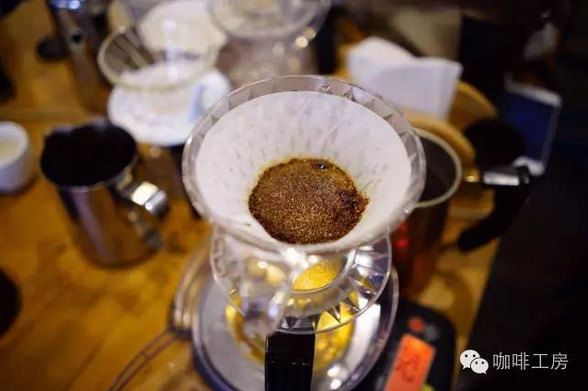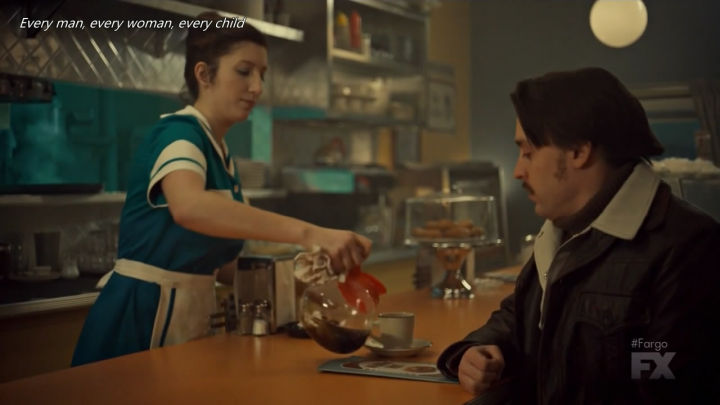A good cup of coffee depends on how well you extract it, time allocation and operation process.
Professional coffee knowledge exchange more coffee bean information please follow the coffee workshop (Wechat official account cafe_style)

Extraction plays the most important role in brewing a cup of coffee, whether it is hand-dripping filtration, Espresso semantic concentration, or any way of brewing has a lot to do with extraction, extraction is the focus of brewing a cup of coffee, and it is divided into several aspects.
Six ideal extraction methods
Depending on the use of the equipment, each coffee device has a different extraction mode:
Soaking method:
French filter pressure, Turkish coffee is to soak the coffee in hot water, and finally separate the coffee grounds to get stronger coffee. Iced coffee is iced coffee, which can be used to remove miscellaneous powder before drinking.
Cooking method:
Just like in many films, foreigners put pot-shaped coffee pots down in the morning to make coffee, using slow heating on the stove and convection extraction in water to extract coffee, which is mostly used in American coffee.
Infiltration mode:
The representative example is the mocha pot, where hot water is added to the furnace and heated to extract coffee from the boiling water to the upper pot, and the coffee is obtained by means of heat penetration.
Hand drip filter:
Hand coffee uses hot water to pour into the coffee, the taste of ground coffee powder is extracted into the water, and then gravity is used to make the coffee flow from top to bottom to complete the extraction. In addition, ice droplets also belong to this way of low filtration.
Vacuum filtration:
Siphon Syphon uses vacuum filtration. Syphon uses the siphon principle to absorb the hot water from the lower pot to the upper pot for coffee extraction. After pinching the extraction process, the heat source of the lower pot will flow back to the next pot.
Pressurization mode:
Obvious examples are Espresso semantic concentration and Aeropress Philharmonic pressure. The former uses high pressure, high temperature and nine atmospheric pressures to brew coffee to get concentrated coffee, while the latter first uses stirring and extraction in hot water, and finally completes the extraction of coffee by unarmed pressure.
Each method has its own characteristics, and no particular one is superior to the other. with the right brewing, choosing the right coffee beans, and the right grinding degree, you will be able to extract the good coffee you want to drink. Here are the more common hand brews and synonyms.
Extraction of hand-brewed coffee
Many of the changes in the extraction of hand-brewed coffee can be controlled by ourselves, and it is also because so many factors enable us to adjust a variety of tastes. It may be too sour or bitter in the mouth of others, but it is extremely delicious in your mouth. In that case, you don't have to succumb to the way others brew and brew the coffee you love.
The process of extraction
Grind the coffee beans into powder to increase the contact area between coffee and hot water.
There are many chemical reactions in the process of roasting coffee beans, such as Mena reaction, these processes will make coffee beans produce scorched aroma and many aroma factors that this coffee should have become more mature. the degree of roasting will also determine the sour, sweet, bitter and thickness of coffee beans. Coffee beans with more fruity aroma usually use shallow roasting treatment, and the deeper the roasting degree is, the bitterness will increase. How to balance the sour, sweet and bitter of a coffee bean depends on the skill of the baker. After roasting, coffee beans will have many small holes. If you do not make good use of the one-way valve hole packaging and preservation at this time, it will lead to the loss of aroma factors of coffee. Grinding into powder before drinking is the best choice.
Dissolve coffee aroma factors in water by dissolution and diffusion
When brewing coffee, the taste of coffee will be extracted through the two principles of dissolution and diffusion. after the flow of hot water, the hole in the ground coffee bean cell will squeeze the gas out of the cell, creating a visual effect that will expand when the hot water is washed down at the beginning. The hot water entering the coffee cell will dissolve the taste of the coffee, resulting in a higher concentration of concentrated liquid, which is resting for a period of time to make the dissolution higher. The later water injection uses the diffusion effect, and the higher concentration of coffee extract will turn the hot water into the same concentration of liquid, which is also called steaming.
Remove the coffee grounds that have been cooked
The use of too fine or too coarse grinding degree may change the extraction process, if it is too coarse, the effect of dissolving will be too low, so that the coffee taste is not enough; on the contrary, too fine will release the bitterness to the excessive. Extraction time can also have an impact, but everyone drinks coffee differently, and it's right to keep trying to find your favorite grind and brew.
Extraction of Espresso semantic concentration
There are several elements needed to extract a nice, tasty Espresso:
Extraction pressure is about 9. Atmospheric pressure
The amount of extraction is 25-30 c.c.
Extraction time 20-30 seconds
Extraction water temperature 85-92 C
This is a simple condition, but there are many other factors, such as the parameters of the coffee machine, coffee grindability, water quality or environmental humidity can change the taste of a cup of Espresso.
Important Notice :
前街咖啡 FrontStreet Coffee has moved to new addredd:
FrontStreet Coffee Address: 315,Donghua East Road,GuangZhou
Tel:020 38364473
- Prev

Cold knowledge | American coffee is not sold in the United States and lattes are not sold in Italy.
Professional coffee knowledge exchange more coffee bean information Please pay attention to the coffee workshop (Wechat official account cafe_style) for domestic, American coffee (Americano) and Latte (latte) is one of the most common choices, but most people do not know that these two kinds of coffee represent the United States, a big country in coffee market, which is different from Italy, a big country in coffee culture. American style is not sold in the United States
- Next

What are the characteristics of coffee beans?
I've always felt that the roast date is one of the most important pieces of information on a coffee bag. It proves that the coffee in the bag is special and one of the best selling points of the product. So I think the roast date is a pledge to let customers know that the coffee in the bag is fresh and good, and also to assure customers that the quality of the green beans I choose, they trust me to roast them for the original beans.
Related
- Beginners will see the "Coffee pull flower" guide!
- What is the difference between ice blog purified milk and ordinary milk coffee?
- Why is the Philippines the largest producer of crops in Liberia?
- For coffee extraction, should the fine powder be retained?
- How does extracted espresso fill pressed powder? How much strength does it take to press the powder?
- How to make jasmine cold extract coffee? Is the jasmine + latte good?
- Will this little toy really make the coffee taste better? How does Lily Drip affect coffee extraction?
- Will the action of slapping the filter cup also affect coffee extraction?
- What's the difference between powder-to-water ratio and powder-to-liquid ratio?
- What is the Ethiopian local species? What does it have to do with Heirloom native species?

